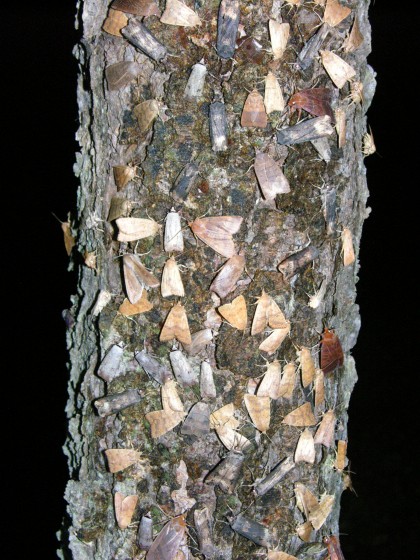
There are two ways to find moths at night – using lights and using bait (link to bait recipes and more). Each technique has the potential to lure in a different set of moths. Some species rarely come to light, while others rarely come to bait.
Of the two techniques, bait is far less consistent. It is difficult to predict when a good night for baiting moths will come along.
Some nights, there are legions of moths thirsty for fermenting fruit, molasses, and beer…and other nights it is an empty bar. Part of this inconsistency may be due to the availability of other options. Presumably the moth bait mimics a resource that moths are used to seeking out, such as nectar and sap flows.
For example, in my neighborhood, a sap flow from a leaky silver maple has been receiving non-stop attention from red admiral butterflies during the day. I bet at night there are a few moths there too.
One of the most consistent times of year for getting good results from moth bait is around now, Halloween. This is possibly because the supply of easy energy like nectar is waning for hungry moths. The bait is in much higher demand, resulting in some spectacular shows of moths on warmer nights.
Metaxaglaea violacea, Sunira bicolorogo, and Anicla infecta were the most numerous species last night.
Some more shots of the moth scrum.
At one point we encountered a flying squirrel harrying the moths like a hawk at a bird feeder (sorry no picture!).
In contrast to all the action at the bait, the only moth coming to light was Hypena scabra.